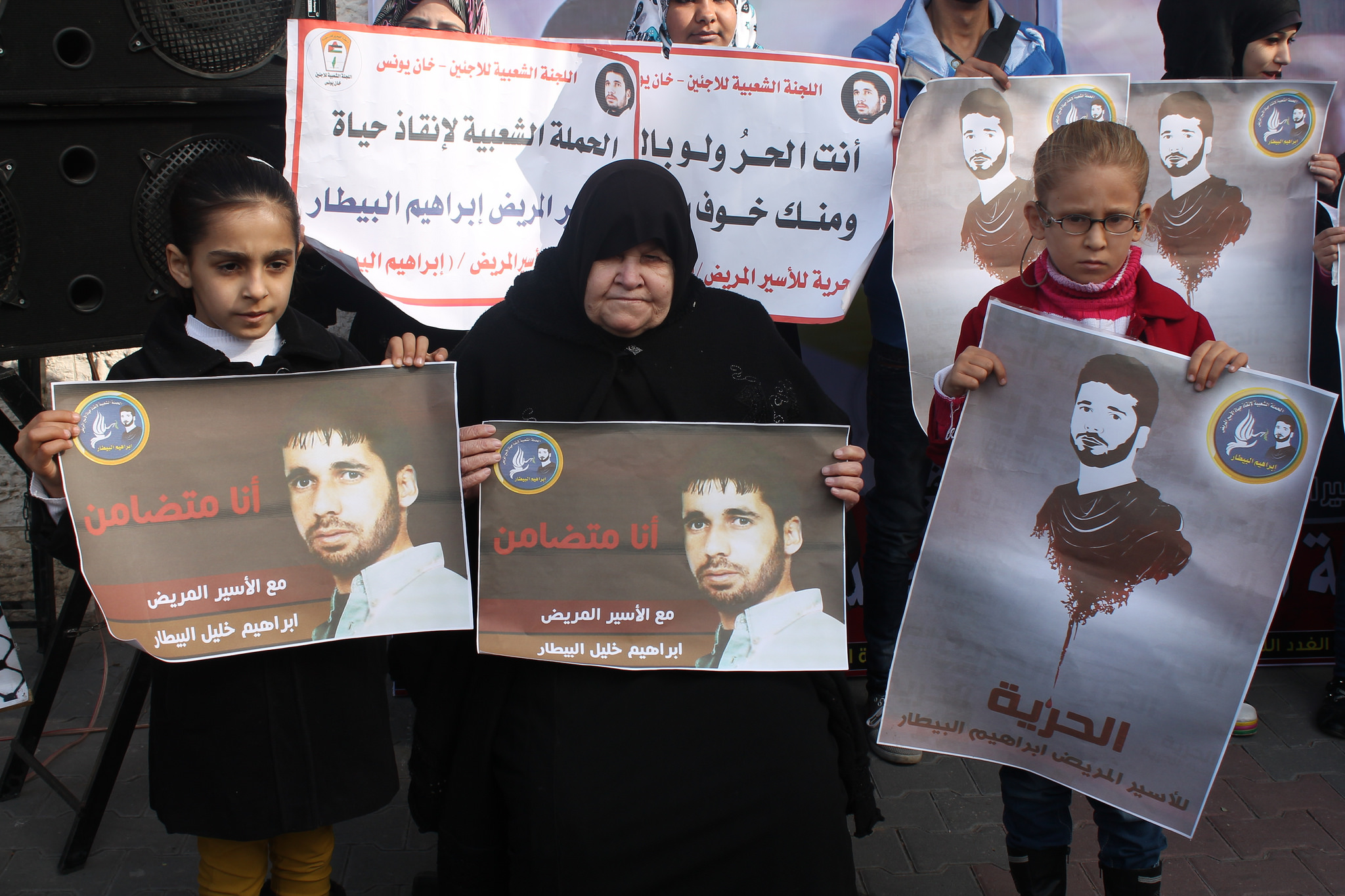Tag: Popular Campaign to Save the Life of the Captive Patient Ibrahim Bitar
-
Gaza rallies in support of critically ill prisoner
9th February 2014 | The Electronic Intifada, Joe Catron | Gaza City, Occupied Palestine Sit-ins to support Palestinian prisoners — held every week since 1995 in the courtyard of the International Committee of the Red Cross’ Gaza office — have recently been followed by rallies outside for Ibrahim Bitar, a sick detainee in Israel’s Nafha prison. “We’ve garnered internal support for my…
-
Photos: Rally to save sick prisoner Ibrahim Bitar follows Gaza sit-in for detainees
20th January 2014 | International Solidarity Movement, Gaza Team | Gaza, Occupied Palestine Dozens of Palestinians joined a rally organized by the Popular Campaign to Save the Life of the Captive Patient Ibrahim Bitar outside the International Committee of the Red Cross’ Gaza office this morning. The gathering followed a weekly sit-in by families and supporters…


